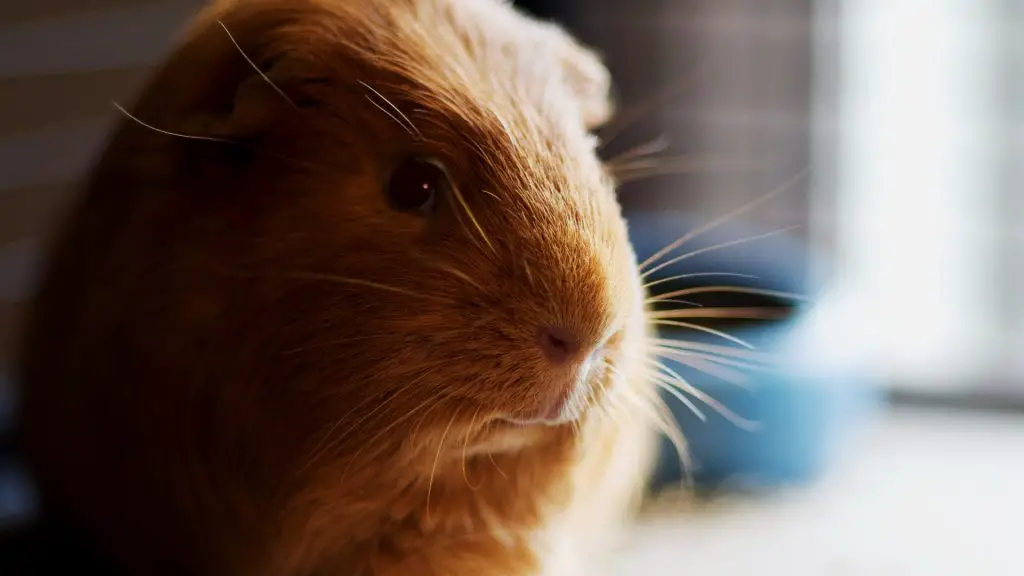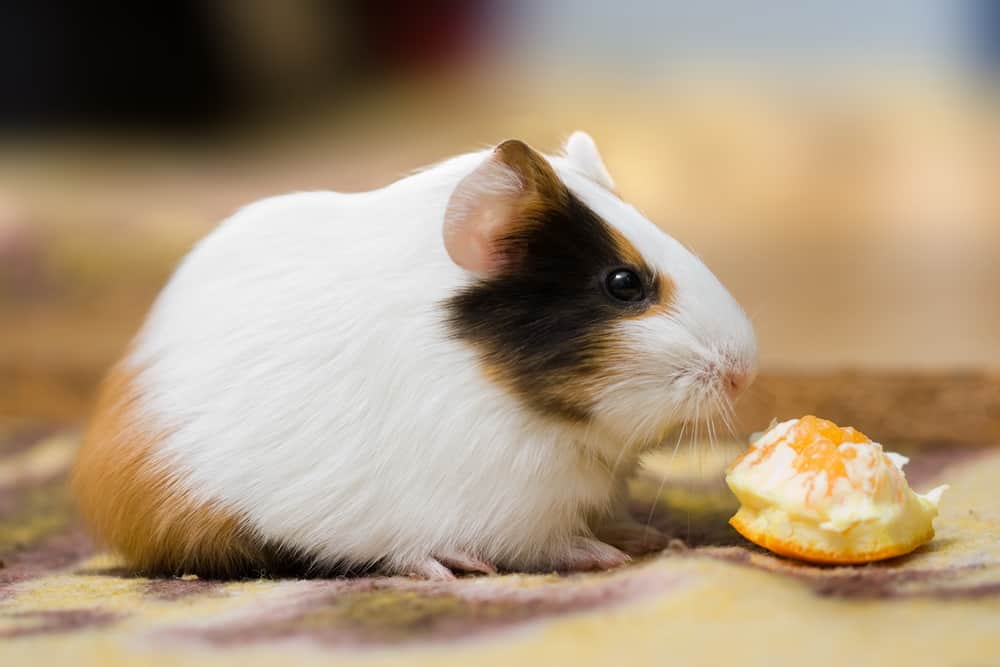


Dark leafy greens such as kale, collard greens, mustard greens and dandelion greens are particularly good sources of vitamin C, but you can also try offering sweet peppers, apples, pears, berries, broccoli, cucumbers, parsley and basil. To prevent this from happening, you should feed your guinea pig FRESH FRUITS AND VEGETABLES daily. Guinea pigs are unable to produce their own vitamin C, much like humans, and therefore need an outside source to avoid developing a disease called scurvy. Provide hay in a hay feeder or simply put it in the corner of the cage. You should avoid legume hays, like alfalfa, because they are too high in calories, calcium and protein for your guinea pig. Any grass hay is good to feed, such as timothy and orchard brome. Indigestible fiber keeps the intestinal tract moving at a normal speed and digestible fiber is used the GI bacteria to produce vitamin B and amino acids. Grasses also provide a number of nutrients for the guinea pig, as well as both indigestible and digestible fiber. Grasses are particularly great for guinea pigs because they’re teeth grow continuously throughout their life and grass hays are abrasive to the teeth. The most important part of their diet, like rabbits, is GRASS HAY. Visit your local humane society to find people who can help you make the proper pet choice.Guinea pigs are herbivores. Guinea pigs require a lot of attention, veterinary check-ups, specialized diets and care from their owners. If you are interested in a domestic guinea pig as a pet, remember to do your research. Other close relatives include the maras, capybaras and kerodons of South America.ĭomestic guinea pigs have not been evaluated by the International Union for Conservation of Nature because they have been bred by people and are often kept as pets. Their relatives, other members of the cavy family, exist in the wild but are classified as different species, such as the Brazilian guinea pig (Cavia aperea), the shiny guinea pig (Cavia fulgida), and the montane guinea pig (Cavia tschudii). They are able to walk and eat solid food immediately, although they do continue to suckle from their mother to receive important nutrients and antibodies from her milk.ĭomestic guinea pigs are a species of their own. Gestation typically lasts 60 to 70 days and results in well-developed pups with hair, teeth, claws, and partial eyesight at birth. Females can deliver up to five litters per year of one to six pups. Guinea pigs can reproduce year-round, with births peaking in spring. At Happy Hollow they are fed grass hay, guinea pig pellets, fruits, and vegetables. Caecotrophs (soft fecal pellets) are ingested to reintroduce vitamins, fiber, and bacteria needed for digestion. Due to lack of a complex digestive track, guinea pigs partake in a behavior known as coprophagia (eating their own feces). Most mammalian grass-eaters have long digestive tracts in order to break down food and absorb nutrients. When excited, guinea pigs often hop in the air repeatedly, a behavior that has been called “popcorning.” Guinea pigs startle easily and will either hold still to avoid being detected or sprint for cover. Instead, they randomly scatter periods of activity with shorter periods of sleep throughout the day and night. Unlike many animals, guinea pigs are neither strictly diurnal (primarily active during the daytime) nor nocturnal (primarily active during the nighttime). Guinea pigs are social animals and form close bonds with each other. Like other rodents, guinea pigs are equipped with sharp incisors (front teeth) that grow throughout their lifetime and are constantly worn down by the grasses and hay they eat. Domestic guinea pigs come in a variety of patterns, colors, and hair types and some are bred specifically for certain characteristics. Guinea pigs are rodents measuring eight to 10 inches long and weighing up to 2.5 pounds. Range: Originally from the Andes Mountains of Ecuador, Peru, and Bolivia Domesticated worldwide


 0 kommentar(er)
0 kommentar(er)
